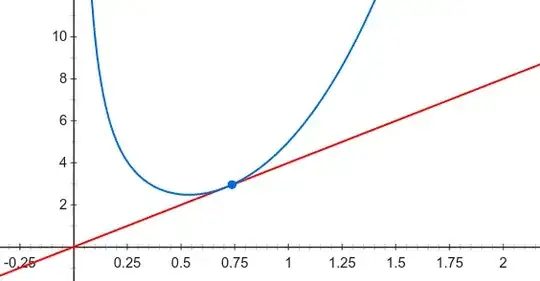To find the minimum value of $x+\dfrac{1}{x}$, $(x>0)$ we can use the AM-GM inequality to say that $$\dfrac{x+\dfrac{1}{x}}{2}\geq \sqrt{x\cdot \dfrac{1}{x}}$$ or $$x+\dfrac{1}{x}\geq 2$$ The minimum value is when $x=\dfrac{1}{x}$ i.e. at $x=1$
If we take another function $4x^{3}+\dfrac{1}{x}$ then $$\dfrac{4x^{3}+\dfrac{1}{x}}{2}\geq \sqrt{4x^{3}\cdot \dfrac{1}{x}}$$ or $$4x^{3}+\dfrac{1}{x}\geq 4x$$ Here the minimum value should be $2\sqrt{2}$ at $4x^{3}=\dfrac{1}{x}$ i.e. at $x=\dfrac{1}{\sqrt{2}}$ but the actual minimum value is at $x=\dfrac{1}{\sqrt[4] {12}}$.
This is just a random example but I've noticed that if the variables don't cancel out on the GM side then the wrong minimum value is obtained. What am I doing wrong?
(Note: I am aware that there are better methods to find the minimum value. I am just wondering about this specific method.)
